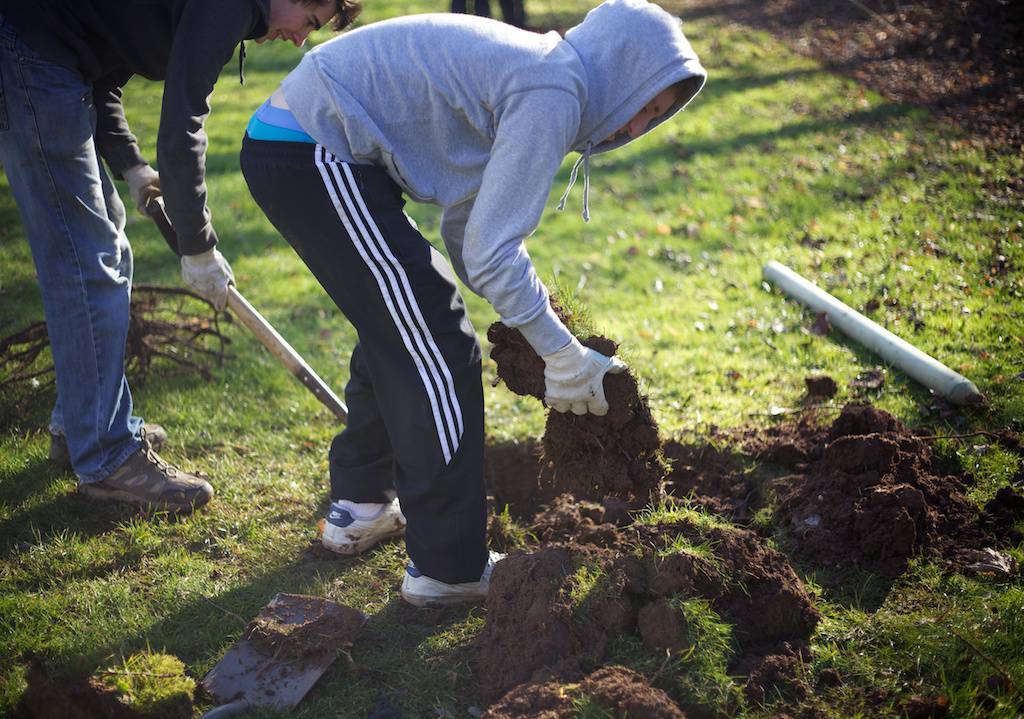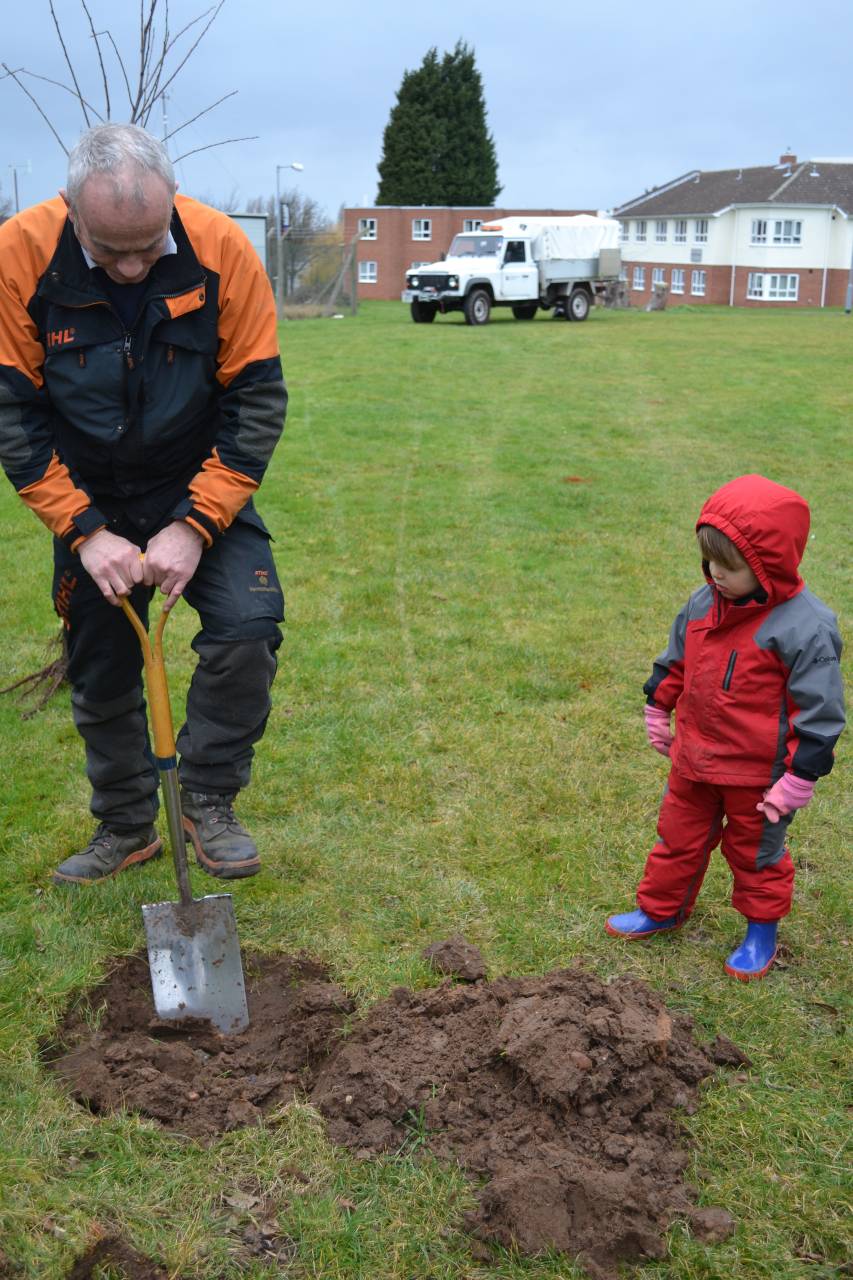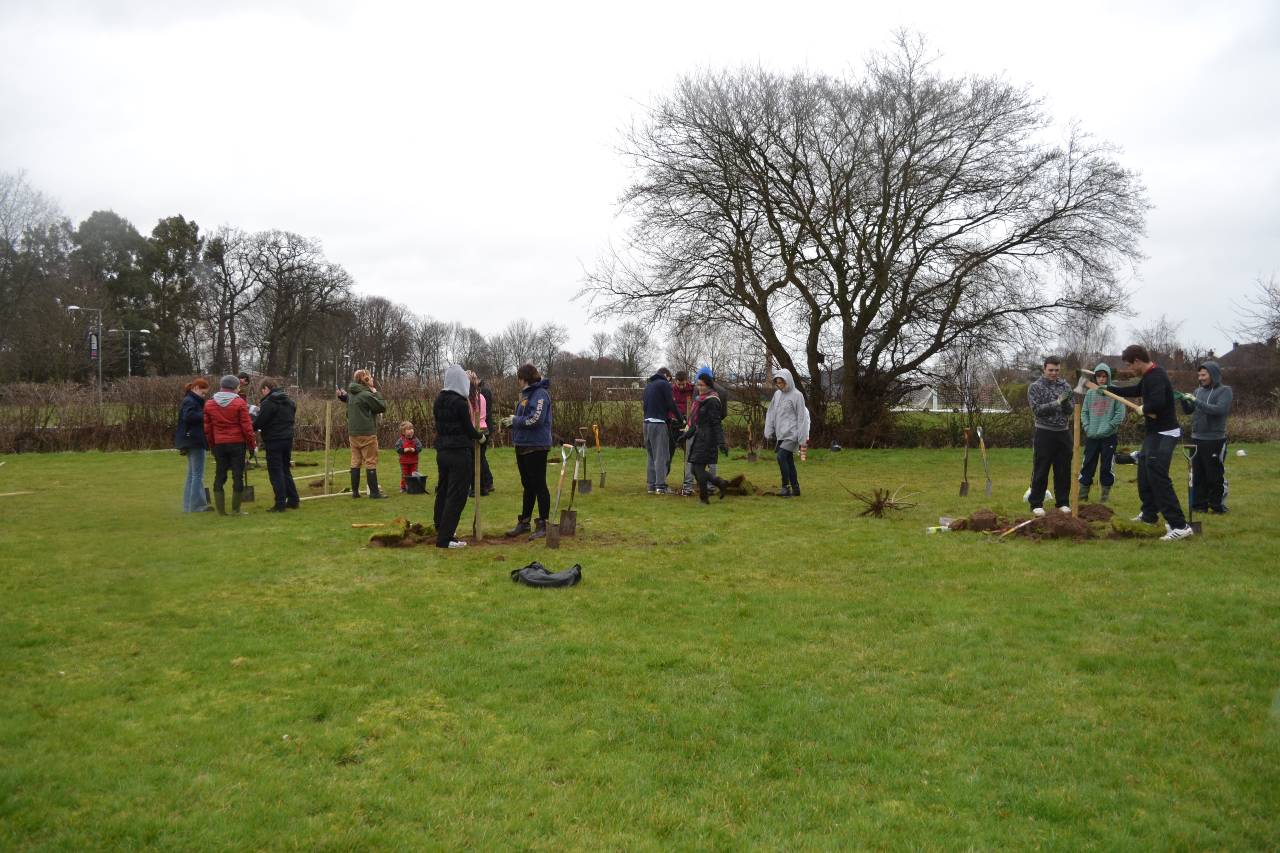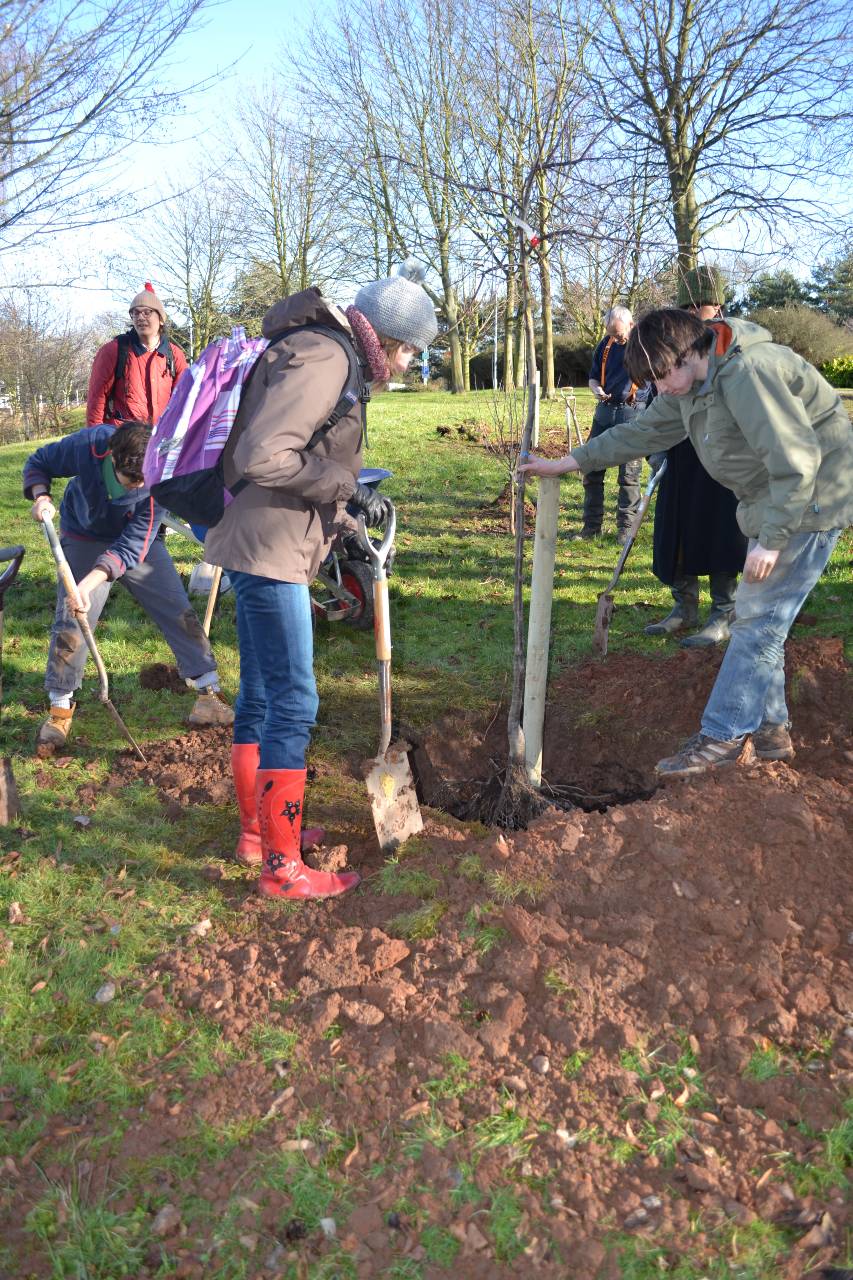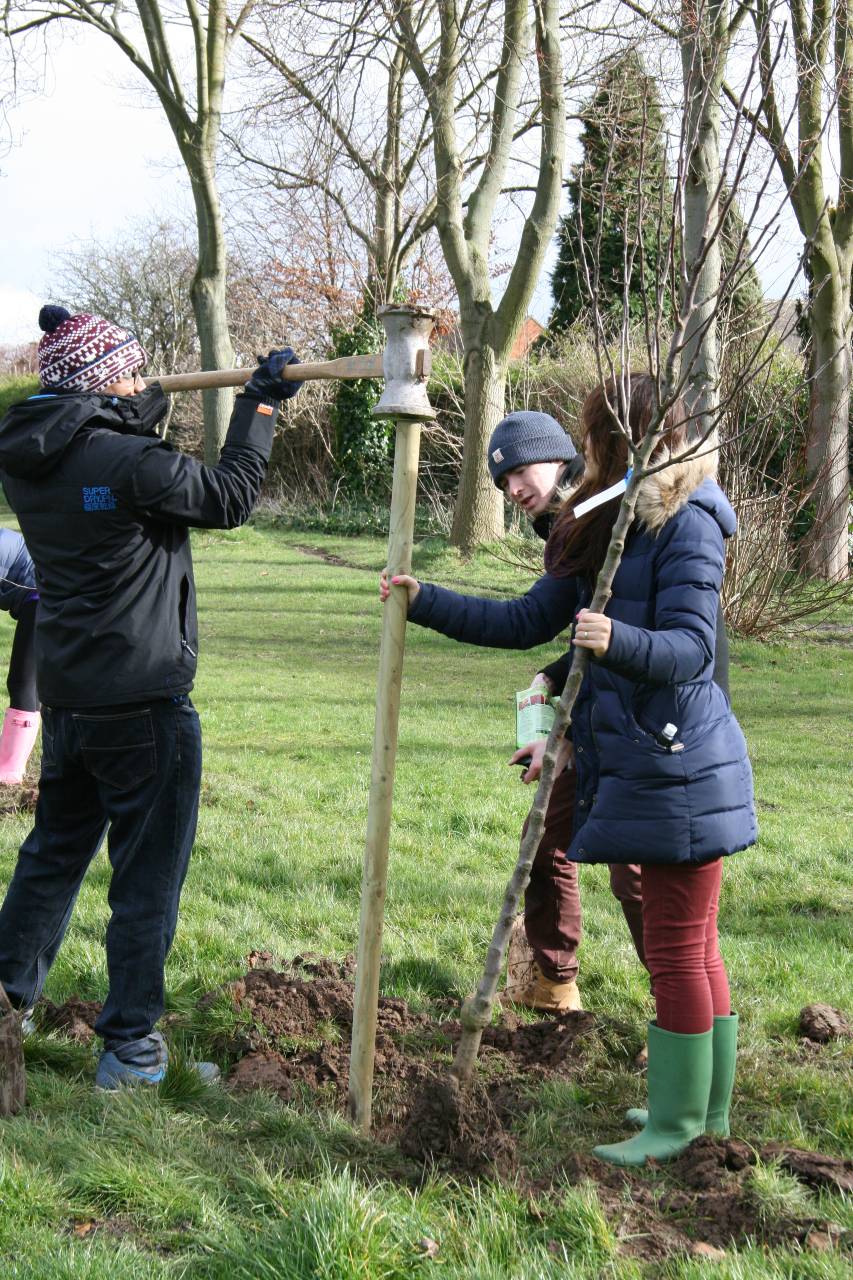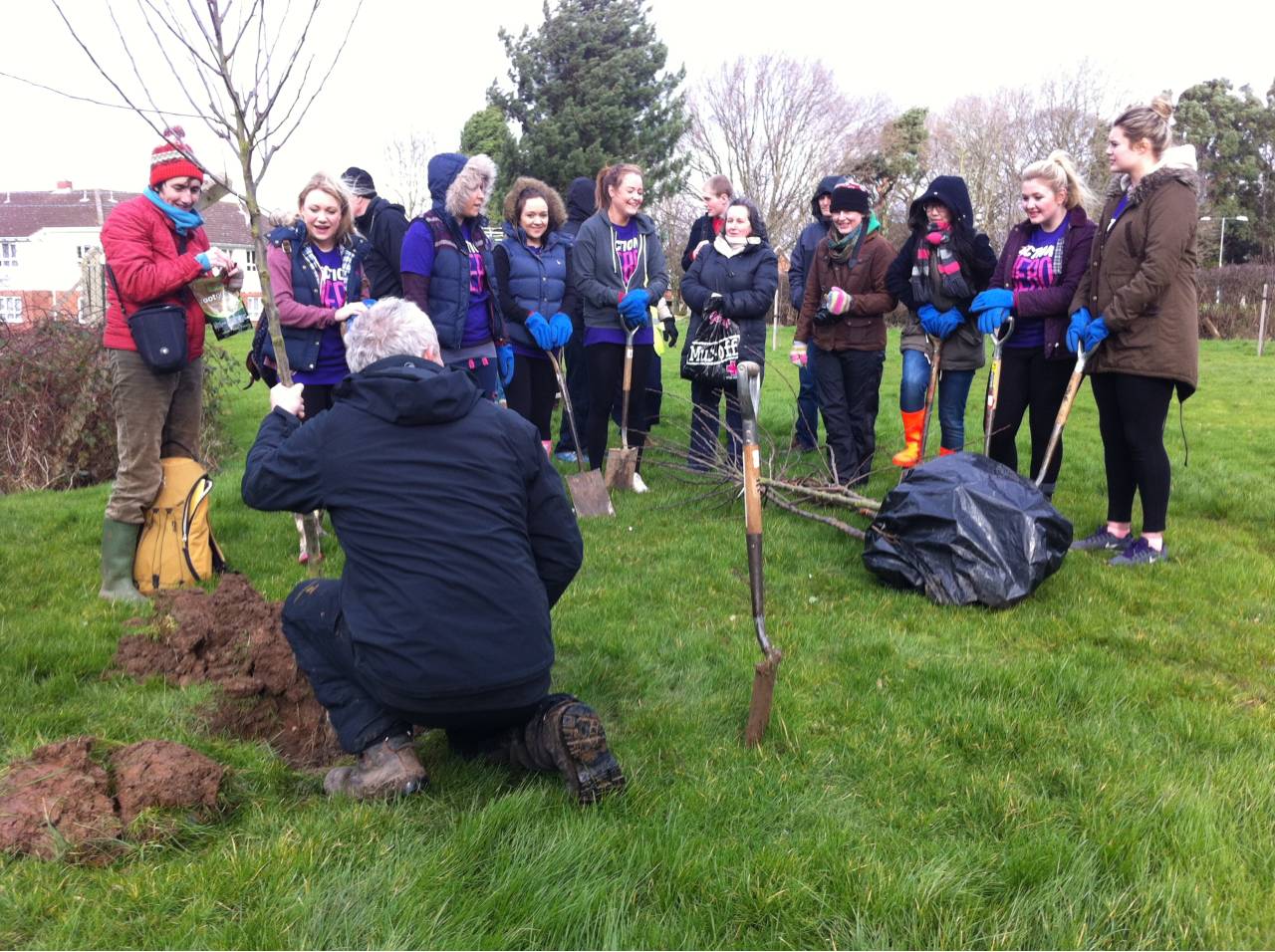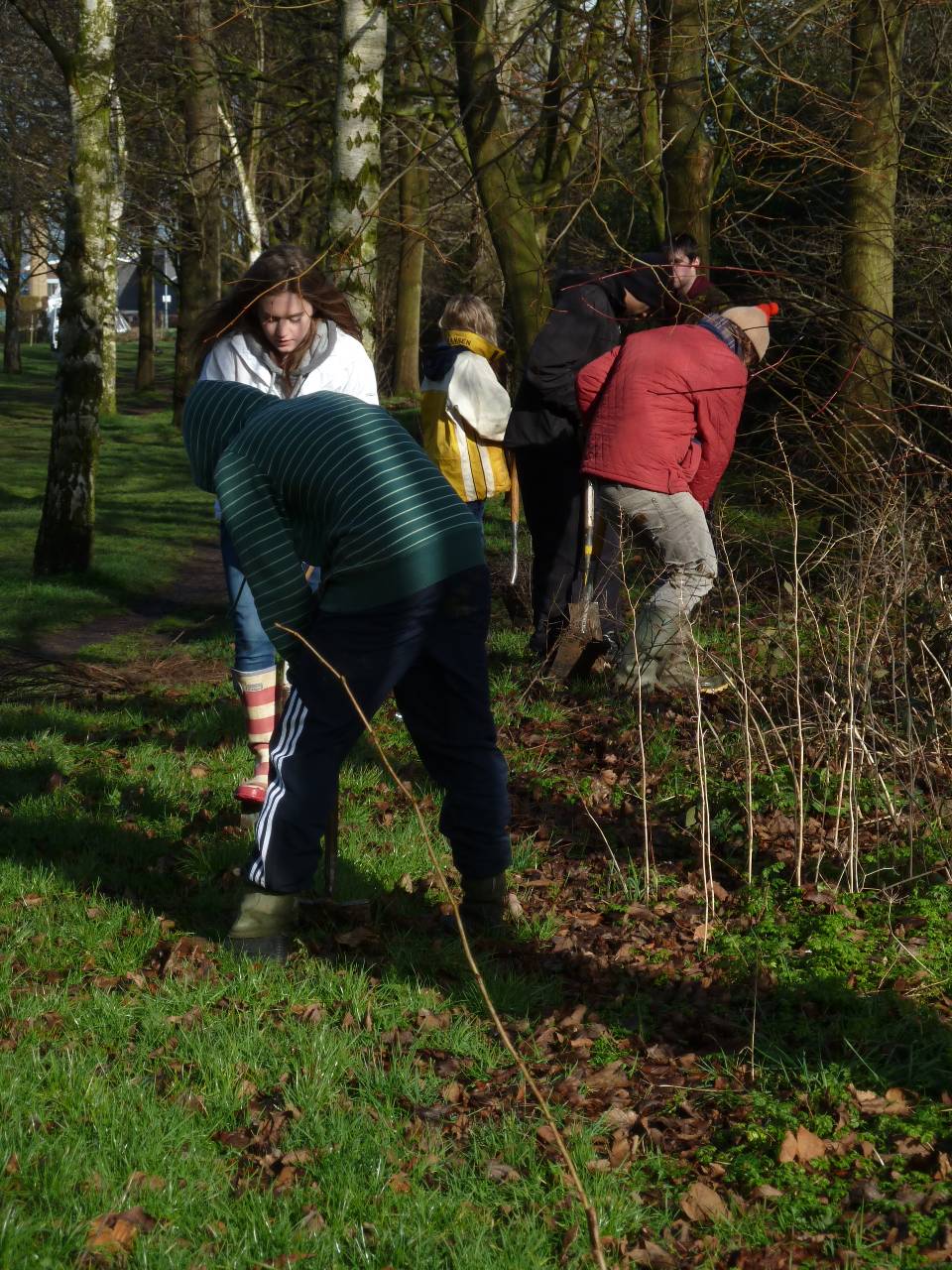On Fruit Routes 550 hedgerow whips and over 150 one and two year old fruit and nut trees have been planted, mostly along a 1km route. This includes fruit and nut trees of 55 different varieties, including some heritage varieties, of 18 different fruit and nut species.
Trees have been located on the sides of buildings as well as in small orchard clusters. Trees have been planted by the gardens team and community members of all ages, families, staff, students and student volunteers over a number of years.
Planters at the first event received a limited edition screenprint in exchange for their physical labour. Please see the map to find out which trees are planted where. The Fruit Routes map (link) also gives details of variety, ripening time and use for the fruit.
Ten years on, the trees are starting to create a new sense of pllce, to create a different ecology noticable through the stopping off points of birds, the buzzing of pollinators and also barefoot students revising together or taking a break from the library. The Gardens Team maintain the route, including pruning and mulching with some help from volunteers and the route is managed organically with no artificial pesticides or herbicides.
It is hoped that the Route will continue to grow. The Gardens team are currently exploring more sites for trees which can grow up the side of buildings. These trees are trained to grow flat against the walls in two dimensional form. The apricot and quince on the side of the David Davies building have been particularly successful, taking advantage of a rain sheltered, south facing site and the insulating warmth of the building behind them.
Rachel Senior, Senior Gardener, Gardens Team shares her experience of Fruit Routes over 10 years:
Maintaining in excess of 140 fruit and nut trees along the Fruit Route using organic methods brings fresh challenges and frustrations. Testing new methods and sometimes conquering diseases has proved both cathartic and rewarding. I spent a sunny afternoon tuned into the omnibus edition of a famous Radio 4 soap opera, carefully picking every single affected leaf from four young almond trees affected by peach leaf curl and diligently transporting the culprits in a black bag to be burnt. The naked trees looked a season behind their neighbours of apples and pears which were clothed in lush green leaves, but having left the spent flower buds intact, they recovered and each managed to produce a single almond by the end of the season! The powdery mildew coating the soft juvenile bracts of the apricot in early May 2016 took a little longer to subdue. I tried two remedies. A mixture of one part milk (organic, of course) to ten parts water in a hand spray. This was applied at two-week intervals. Along with this I prepared a garlic wash by pressing soaked garlic through a cloth and retaining the water as the medicine – also sprayed on the damaged leaves. The happy conclusion to this experiment was the mildew disappeared within a month and the apricot went on to produce its most abundant crop yet. The grapevine also produced a bountiful crop in 2016. Situated on a sheltered wall facing due south, each year it produces clusters of small, juicy sweet fruits. Long, winding shoots appear in the spring and by early summer have reached lengths of ten feet (just over three metres), which are regularly tied in or snipped back. Tendrils wind their way around the supports and the vine becomes an intricate, latticework of tender, green stems. As the season moves on, it can be challenging to protect the bunches of sweet deliciousness from the clutches of enthusiastic pickers who begin plucking them too early, preventing the fruits from reaching their full potential.
Imagine my surprise one July day when I was told that somebody was visiting the grapevine with a box in a pushchair and was busily collecting the vine’s yield and putting it in the box. I went along to the vine and watched the lady from a distance for a while. I soon realised she was not plucking the delicate juvenile grapes, but instead was collecting handfuls of the large, heart-shaped leaves in order, she told me, to make that popular Middle Eastern delicacy of Dolmas – stuffed vine leaves. How rewarding to have two parts of the vine picked and used for food.
